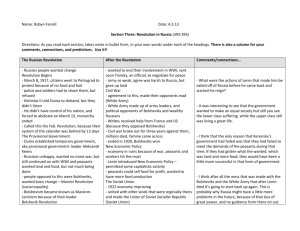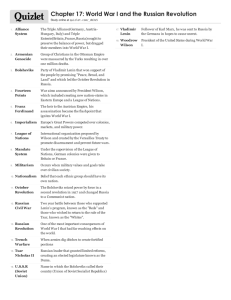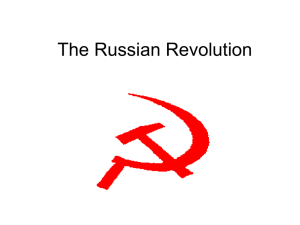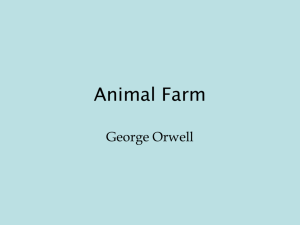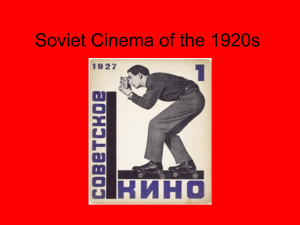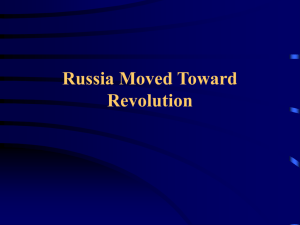GO Russian Revolution
advertisement
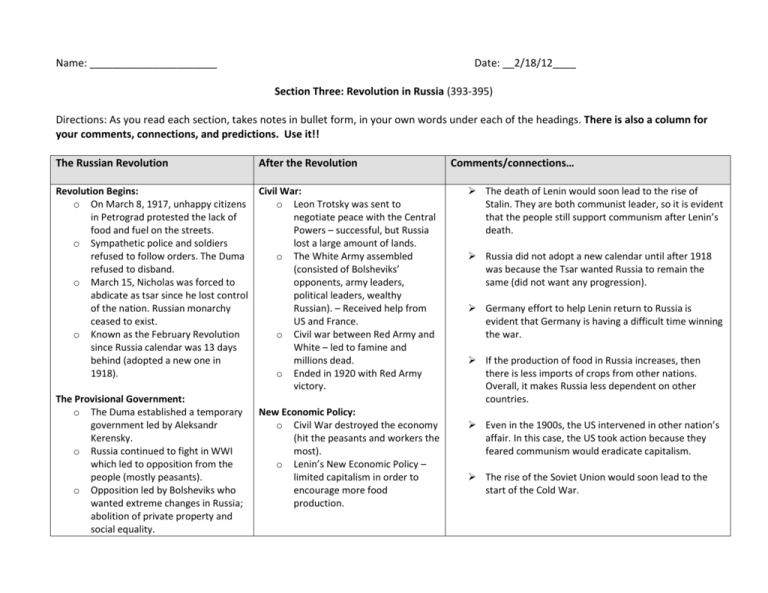
Name: ______________________ Date: __2/18/12____ Section Three: Revolution in Russia (393-395) Directions: As you read each section, takes notes in bullet form, in your own words under each of the headings. There is also a column for your comments, connections, and predictions. Use it!! The Russian Revolution After the Revolution Revolution Begins: Civil War: o On March 8, 1917, unhappy citizens o Leon Trotsky was sent to in Petrograd protested the lack of negotiate peace with the Central food and fuel on the streets. Powers – successful, but Russia o Sympathetic police and soldiers lost a large amount of lands. refused to follow orders. The Duma o The White Army assembled refused to disband. (consisted of Bolsheviks’ o March 15, Nicholas was forced to opponents, army leaders, abdicate as tsar since he lost control political leaders, wealthy of the nation. Russian monarchy Russian). – Received help from ceased to exist. US and France. o Known as the February Revolution o Civil war between Red Army and since Russia calendar was 13 days White – led to famine and behind (adopted a new one in millions dead. 1918). o Ended in 1920 with Red Army victory. The Provisional Government: o The Duma established a temporary New Economic Policy: government led by Aleksandr o Civil War destroyed the economy Kerensky. (hit the peasants and workers the o Russia continued to fight in WWI most). which led to opposition from the o Lenin’s New Economic Policy – people (mostly peasants). limited capitalism in order to o Opposition led by Bolsheviks who encourage more food wanted extreme changes in Russia; production. abolition of private property and social equality. Comments/connections… The death of Lenin would soon lead to the rise of Stalin. They are both communist leader, so it is evident that the people still support communism after Lenin’s death. Russia did not adopt a new calendar until after 1918 was because the Tsar wanted Russia to remain the same (did not want any progression). Germany effort to help Lenin return to Russia is evident that Germany is having a difficult time winning the war. If the production of food in Russia increases, then there is less imports of crops from other nations. Overall, it makes Russia less dependent on other countries. Even in the 1900s, the US intervened in other nation’s affair. In this case, the US took action because they feared communism would eradicate capitalism. The rise of the Soviet Union would soon lead to the start of the Cold War. o Leader of Bolsheviks was Vladimir Lenin who returned to Russia in April 1917 with the help of Germany (they wanted to weaken Russia). The Bolshevik Revolution: o Mid 1917, Kerensky’s government final military offense ended in a failure, and led to widespread rebellion in the army. o November 1917 – Bolsheviks factory workers (Red Guard) attacked the government. o Known as October Revolution – collapse of Kerensky’s government, and rise of Bolsheviks. o Lands were given to peasants, factories given to workers. The Soviet Union: o 1922, Russia economy improved, and reunited with neighboring lands to form Union of Soviet Socialist Republics (USSR). o A communist nation. o Lenin died in 1924, and struggle for control over the nation began.


